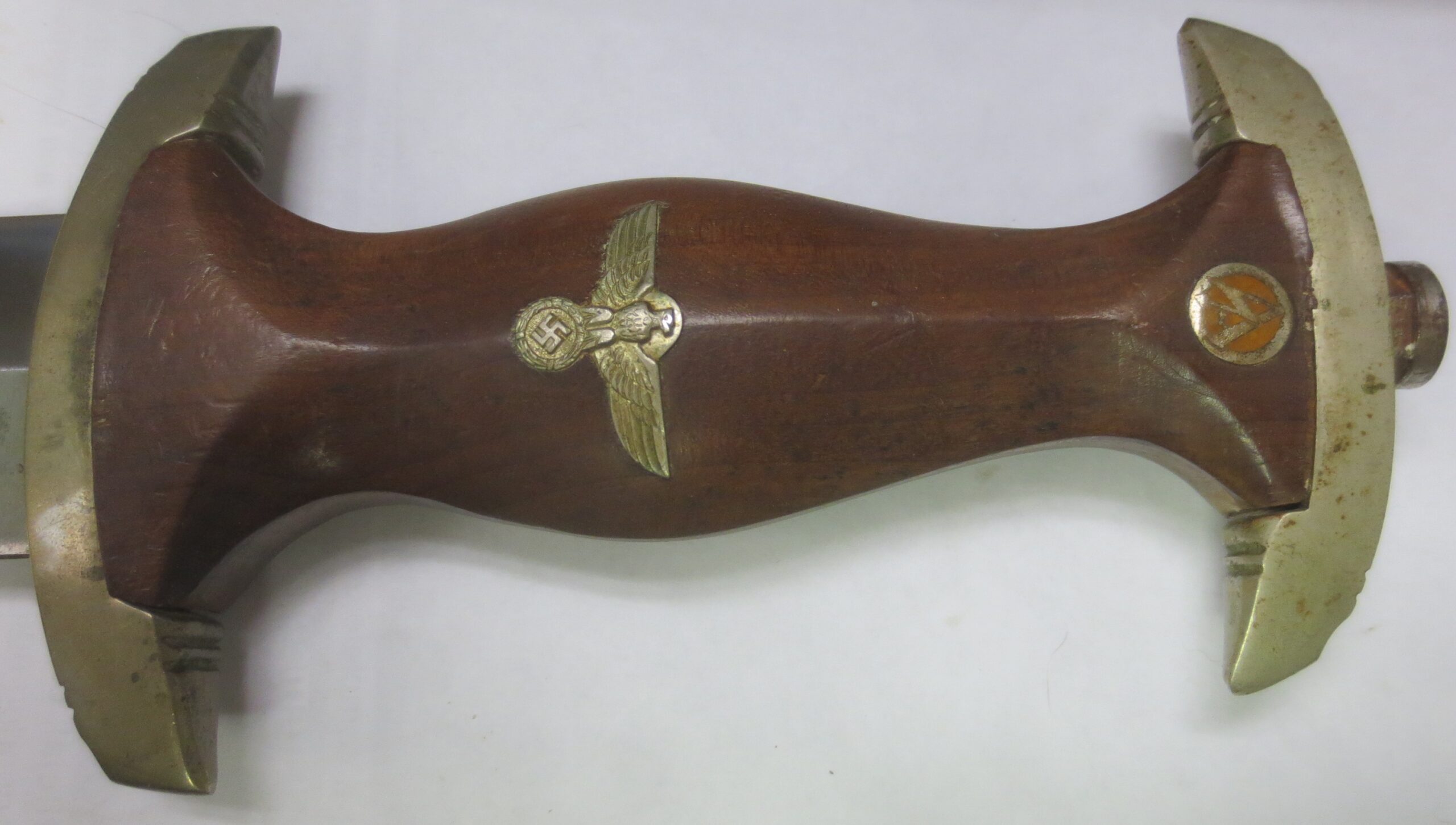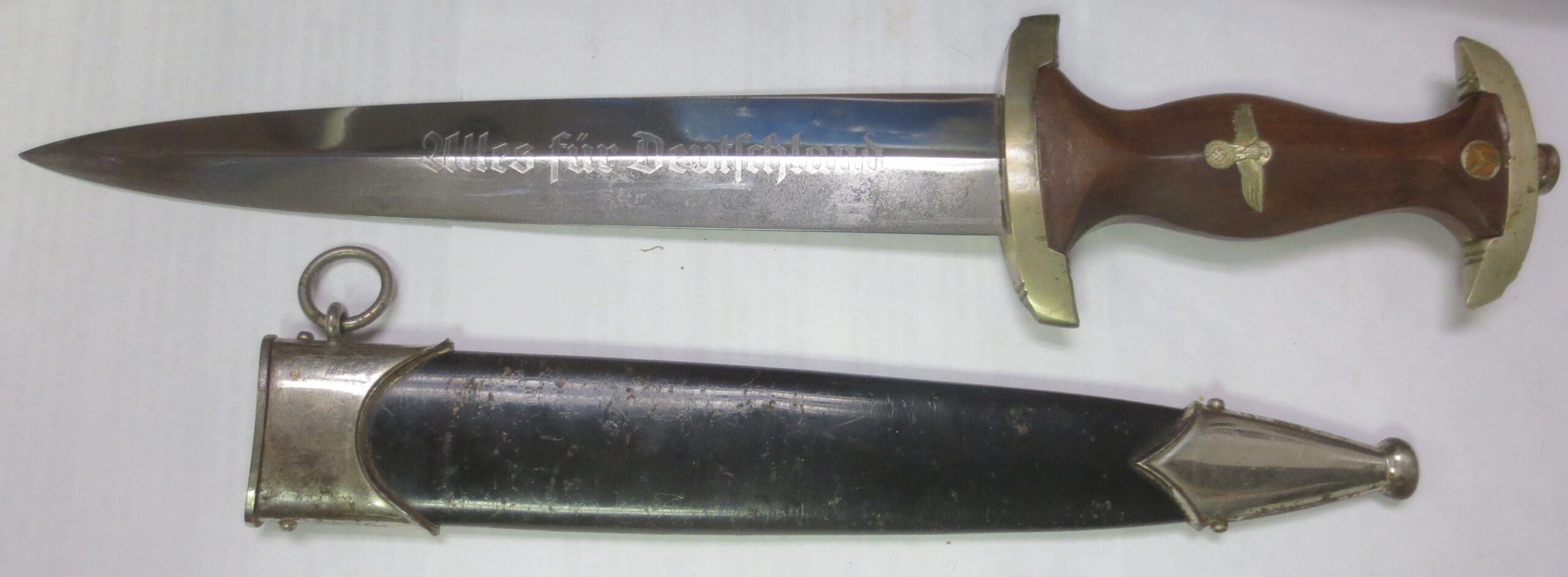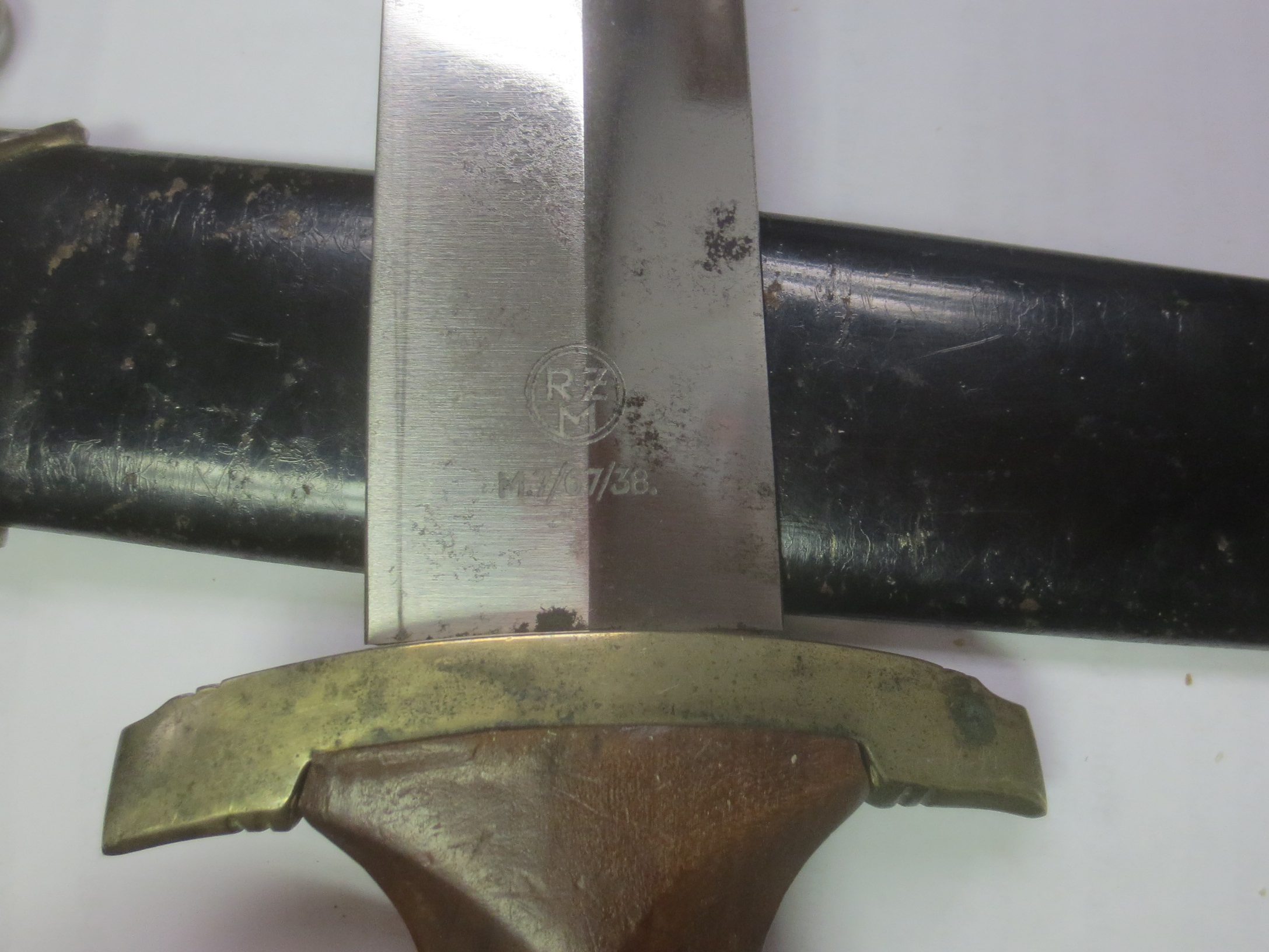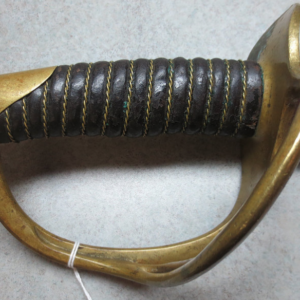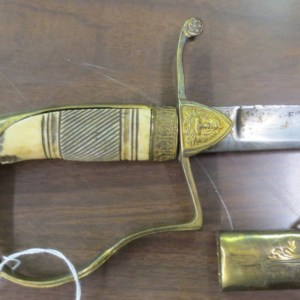Description
This is a very honest example of an original Model 1933 WWII era Nazi German NSKK dagger as manufactured under the authority of RZM and is crisply and clearly marked “RZM (in a double lined circle), M.7/67/38.” Decoded, the maker is Gottlieb Hammesfahr of Solingen, Germany, and this particular dagger is classified as a transitional early pattern with a rarity of 6-7. The original etching “Alles fur Deutschland” (All for Germany) is strong and crisp and the blade is devoid of any nicks or dings. There is minor oxidation as shown. The sheath retains over 80% of the original black enamel with only minor use and storage wear. The blade fit is tight and there are no loose parts.
The National Socialist Motor Corps (Nationalsozialistisches Kraftfahrkorps, NSKK) was a paramilitary organization of the Nazi Party (NSDAP) that officially existed from May 1931 to 1945. The group was a successor organization to the older National Socialist Automobile Corps (Nationalsozialistisches Automobilkorps, NSAK), which had existed since April 1930.
The NSKK served as a training organization, mainly instructing members in the operation and maintenance of high-performance motorcycles and automobiles. The NSKK was further used to transport NSDAP and SA members and also served as a roadside assistance group in the mid-1930s. The outbreak of World War II in Europe led to recruitment among NSKK ranks to serve in the transport corps of various German military branches.
The Reichszeugmeisterei (Nationalsozialistisches Kraftfahrkorps, aka RZM) was formally located in Munich and was the first and eventually the primary Zeugmeisterei (quartermaster’s office) as well as the national material control office of Nazi Germany. It replaced the SA-Wirtschaftsstelle, the purchasing agency of the Sturmabteilung. The RZM office defined design, manufacturing and quality standards and published an authoritative color chart for textiles. A RZM license could be bought and by the middle of 1934 there were about 15,000 licensed manufacturing factories and craft producers, 1,500 tradesmen, 75,000 master tailors and 15,000 so-called “brown shops” in the German Reich.
All pieces of equipment had to be labelled with a visible RZM copyright protection symbol and a product-assigned RZM number that contained encoded data about the textile sector, material group, producer number and year of production. All products were at first tested by World War I veterans and invalids, but after the outbreak of World War II prisoners of war were used. Some equipment parts were also stored and shipped from the RZM in Munich.
This WWII dagger is fresh to the collector market and a combat veteran GI trophy from 1944. It is unconditionally guaranteed original and authentic in all respects.

